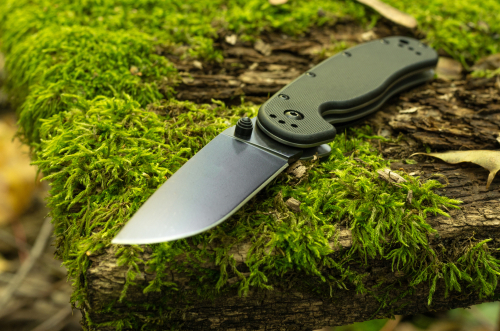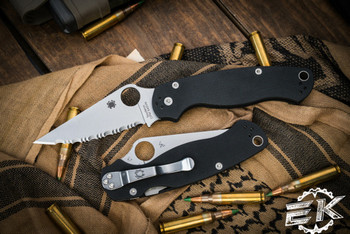Custom Tactical Knives: A Brief History
Sep 6th 2018
Knives have been an integral part of human civilization for thousands of years, as their evolving stages mirrored society’s climb in development. Although the origin of sharp tools and daggers can be dated as far back as the Paleolithic Age, the modern-day knife encountered its most notable transformation when civilization reached the Bronze Age.
Jagged, unrefined tools savagely made from raw materials and stone transformed into the sophisticated weapons of steel we have found from the Iron Age, which then prompted humans to enter their first Golden Age, as they found their potential to make huge leaps in civilization that coincided with civil expansion and colonization.
Knives played a major role in the rise of civilization and human development. Tools made for building mutated into weapons of destruction—an unfortunate, yet necessary transformation for human advancement. Years passed by, empires were built, wars evolved and so did knives.
What Is a Tactical Knife?
The term “tactical knife” was first coined in the 1990s to describe specific knives that were designed for hard, quick uses and which offered military purposes and survival tactics. Custom tactical knives can be fixed blades or folding knives, but some key characteristics include gripped handles, a non-reflective coating and more wilderness and defensive qualities than those of mere utility knives for household use.
Others claim that a proper tactical knife is a close-combat tool and has to be comfortable to wear or carry, it has to function as a survival tool or defensive weapon and it needs to be able to be easily drawn and quickly deployed.
The Rise of Tactical Knives
Although folding knives were around since 1800, the most significant design came from a company named Buck, when it released a compact, durable folding knife with a stainless steel blade and a back lock-design—this was the first time people could see and experience how much of a difference a heavy-duty folding knife could make.
Word about the new strikingly designed knife spread across the country. Hunters, farmers, outdoor enthusiasts and wilderness adventurers began to trade in their trench and field knives for the folding knife that proved to be not only more durable but more versatile.
The news even reached the ears of soldiers in Vietnam. Soldiers began to replace their outdated fighting utility knives with the more useful and heavy-duty folding tactical knife.
However, the excitement around the lock-and-fold knife was short-lived, as users quickly found its limitations. The lock that first brought about convenience proved to be prone to failure, and the designs were primarily made with the intention of hunting, rather than defending. These initial styles were also difficult to access and even harder to deploy efficiently.
The idea was great, but the execution was poor. There was a silver lining for competitors, though. This meant an improvement for growth, thus motivating other companies and designers to conjure up various styles and provide solutions to prior failures.

Custom Tactical Knives Today
Tactical knives are defined by these particular components:
- They have a gripped handle that is made of leather, wood or synthetic material.
- Their blades, whether folding or fixed blades, need to have a non-reflective or non-glare coating.
- The user can easily draw and deploy the knives from his or her body.
- The primary functions and purpose of the knives are survival and tactical use.
If you’re wondering what constitutes survival or tactical purposes, consider the intent of outdoor enthusiasts and military personnel. From hunting animals and carving wood to cutting rope and fighting enemies—these are only a few examples of tactical knives’ functions.
There’s a highly contested debate as to who fathered the birth of tactical knives. Some say it was Robert Terzuola, while others dispute the claim and argue that it was Ernest Emerson. Whoever it was, we can all agree that both figures contributed to the popularization of custom tactical knives, and that the esteemed knifemakers have influenced how we perceive and use those knives today.

Final Thoughts
Knives have stood the test of time and done laudingly well in their evolution. Although the advent of the knife aided mankind in war, knives don’t always need to be used for destruction.
Custom tactical knives can be loyal accompaniments for everyday carry as a tool or a means of self-defense. Tactical knives are great for people who enjoy outdoor activities and for preppers who live off the grid.

